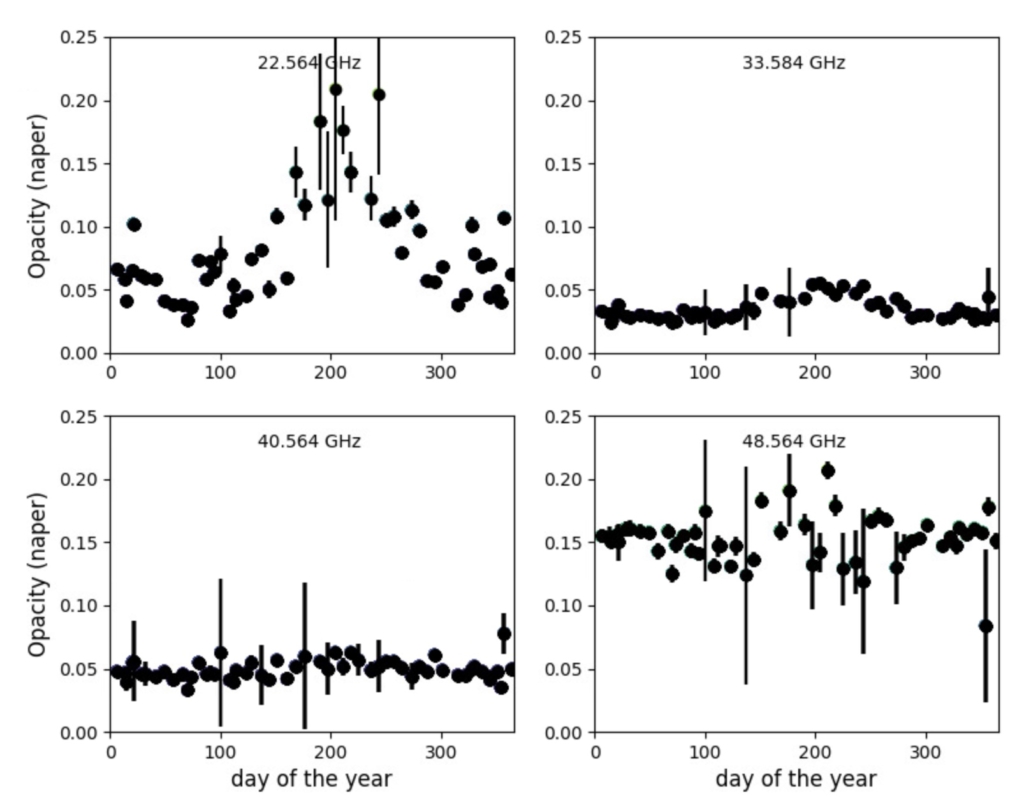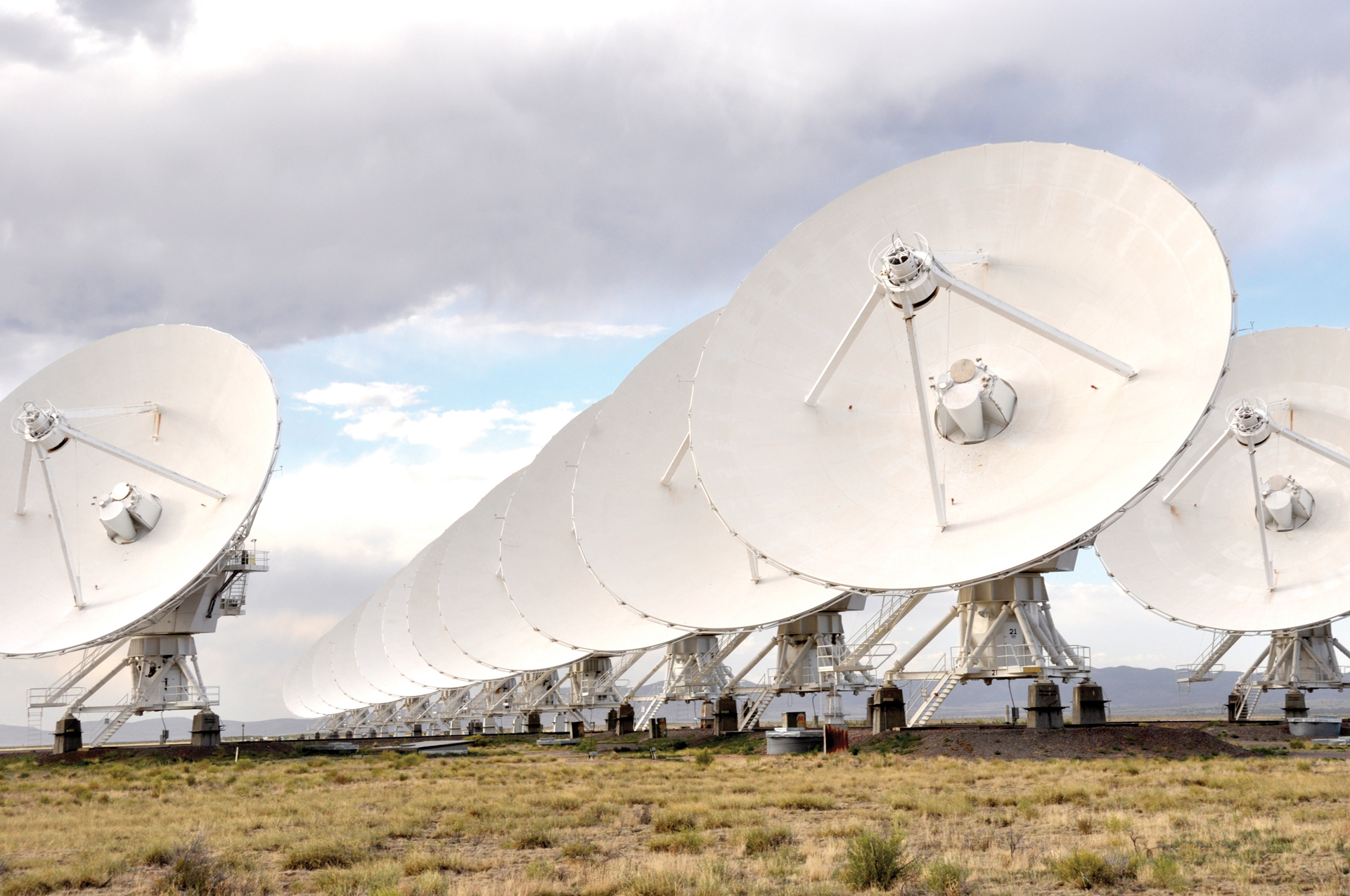Our atmosphere is fairly transparent to a range of radio frequencies, but not perfectly transparent. Astronomers need to know the radio opacity of the sky to understand how to account for it in their observations. But how do you measure the opacity of our atmosphere? The classic method is known as tipping scans, where a radio antenna scans the sky while rapidly tipping the antenna’s elevation from low to high (or vice versa). Tipping scans have been used to measure the opacity of the sky at the site of the Very Large Array, but these were done before the observatory adopted the data processing software known as Common Astronomy Software Applications (CASA).

Atmospheric opacity at different frequencies during the year. Credit: Pedro Beaklini, et al.
In new work, NRAO’s Pedro Beaklini and his colleagues have developed a CASA task that can use data from tipping scans to measure the opacity of the VLA sky. They found that for some frequencies the opacity can vary significantly over the course of the year. For example, at around 22 GHz, atmospheric opacity can be three times higher in summer than in winter. These results will help astronomers better process their radio data.
Pedro presented these findings at AAS 242.






